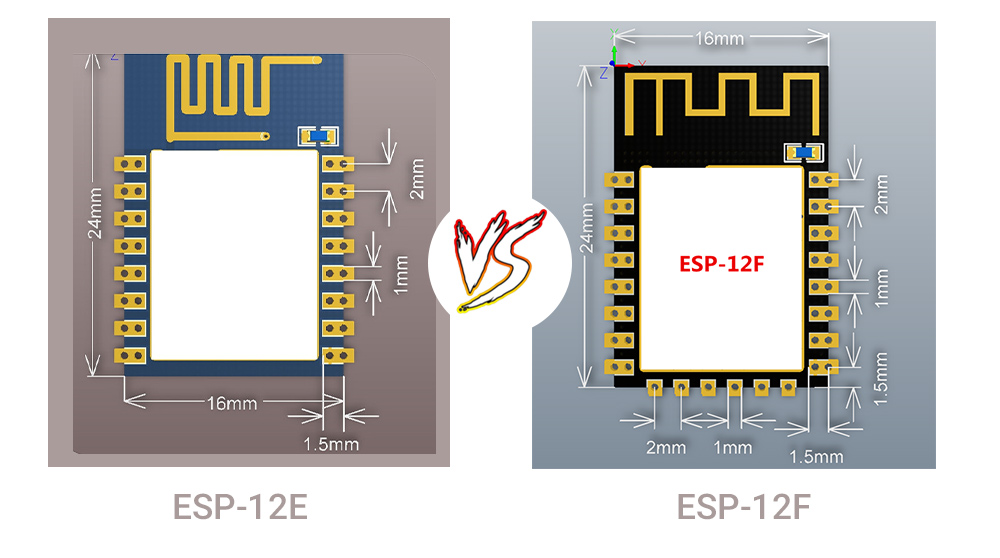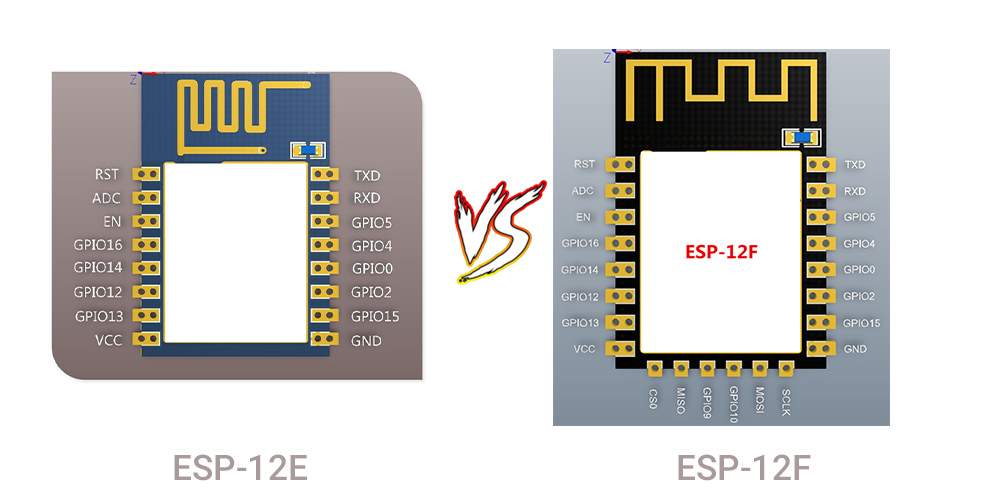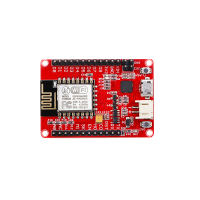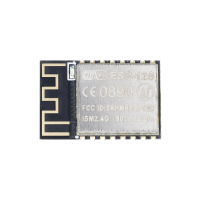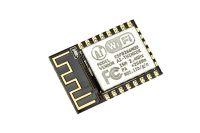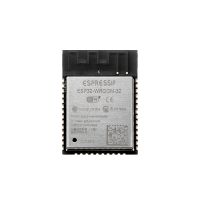Currency
WiFi module-The Difference Between ESP-12E and ESP-12F
August 21, 2021

ESP8266 is a low-cost and high-performance wireless SOC, which provides endless possibilities for integrating WiFi functions into other systems. It can control input and output like Arduino, but the special feature is that it comes with Wi-Fi.
Compared with other Wi-Fi solutions on the market, ESP is the best option for most "Internet of Things" projects! Because it is so cheap that it only costs a few dollars, it can also be integrated into advanced projects. And ESP is also compatible with Arduino IDE. If you have used Arduino before, you will get started quickly using ESP8266.
ESP series Wi-Fi modules are popular in IoT projects. However, due to the fast update iteration speed and lack of module-related information, there are some confusions between ESP modules.
ESP-12E Wifi Module (ESP8266) Vs ESP-12F Wifi Module (ESP8266)
ESP-12E is a member of the "ESP-XX" series. It is a miniature Wi-Fi module used to establish a wireless network connection for a microcontroller or processor. The core of ESP-12E is ESP8266EX. This module has no complicated circuits or programming so using this module is very easy.
The ESP-12F module is also a member of the "ESP-XX" series which combines the ESP8266 microcontroller with 4MB of flash and a PCB antenna. The ESP-12F is an improved version of the 12E. It is pin compatible with enhanced stability and a better antenna.
Let's take a look at the comparison pictures of these two modules!
2-D Model:
Pin diagram:
Circuit connection diagram:
From the picture comparison, you may be able to see some differences between these two modules:
-
ESP8266-12F is an enhanced version of ESP8266-12E, improve the peripheral circuit, the four laminates plate process, enhanced impedance matching, the signal output is better, it is stable with anti jamming ability, PCB antenna after professional laboratory testing, perfect matching, after ROHS certification, have been greatly improved! Based on the SPI and the new six IO port, mouth extraction, development is more convenient, application is more widely.
-
ESP8266-12F built-cloud services that you can use three commands into the global remote control function.
-
ESP-12F: ground-breaking design, the new four-layer board design, the new revision antenna RF performance optimization, increased by 30% -50% Communication distance compared to the ESP-12E!Semi-hole chip technology, the whole IO leads, with metal shielding shell, has passed FCC & CE & RoHS certification, built-board PCB antenna, 4M bytes Flash.
ESP-12F and ESP-12E have the same size and the same pins, The main difference between the ESP-12E and ESP-12F is the antenna design. The antenna of the newer ESP-12F is supposedly better optimized.
But there are some precautions when using the "ESP-XX" series module:
-
The ESP8266 has 3.6V max tolerant I/Os so you will need a logic level converter to connect it with higher voltage devices such as Arduino.
-
The ESP8266 requires 3.3V power so you may need a 3.3V voltage regulator to provide the correct voltage, depending on your setup.
ESP series modules are partly available on the official website:https://www.elecrow.com/,If you have any questions about ESP8266 WiFi Module, please visit our official forum:https://forum.elecrow.com/
_______________________________________________________________
Btw, Raspberry Pi boards are popular and versatile tools for makers. The latest addition to the lineup, Raspberry Pi 5, is the most powerful version yet. Why not upgrade your projects with this cutting-edge device? Join our Giveaway campaign for Elecrow fans to win a brand new Raspberry Pi 5. Don't miss out! Good luck!
Elecrow Monthly RaspberryPi 5 Giveaway


